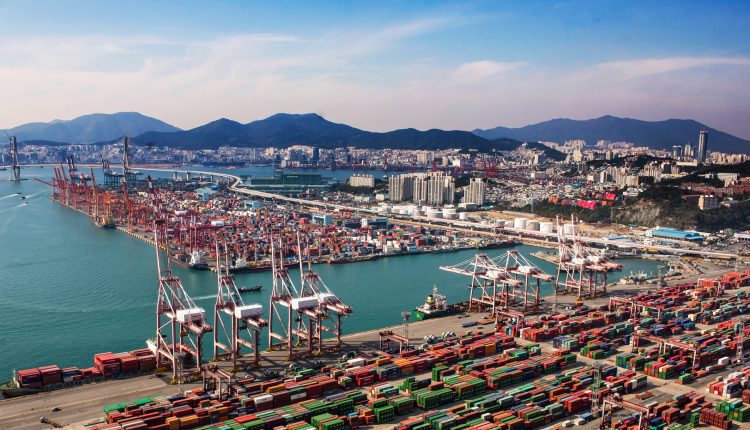Senior officials from Liverpool City Region Combined Authority will visit the world’s largest tidal power plant in South Korea to seek ideas and inspiration for the Mersey Tidal Power project. Tony McDonough reports

Liverpool city region is seeking inspiration from the Far East as it looks to turn plans for its £6bn Mersey Tidal Power Project into reality.
Senior officials from Liverpool City Region Combined Authority (CA) will visit the world’s largest tidal power plant in South Korea as part of a Government-based trade and cultural mission to Busan, the country’s second-largest city.
Led by the CA’s deputy chief executive Richard McGuckin, the mission will include a visit to the Sihwa Tidal Power Plant near Seoul, the world’s largest tidal power plant. There they will meet the chief executive officer of K-Water, which owns and operates the facility.
The idea to generate clean, emissions-free electricity using the powerful tides of the Mersey Estuary has been around for more than two decades but, in the past couple of years, it has been given fresh impetus by Metro Mayor Steve Rotheram.
With a construction cost likely to be in the region of £6bn the CA is looking to develop the next stage designs for the scheme which could either take the form of a barrage or a floating lagoon. Both options present significant technical and cost challenges.
The Mersey Estuary has the second-highest tidal range (the difference between the lowest and the highest tides) in the UK. It rises from 4m up to 10m at spring tide and is second only to the River Severn. Water from the high tides would be released through turbines as the tide falls, generating power.
Currently, the UK’s generating capacity stands at around 76 GW. Experts believe the facility could generate 1 to 5 GW of power – around 7% of the UK’s total current generating capacity. Previously Mr Rotheram has said the scheme would generate enough electricity to power one million homes or 500 football stadiums.
Earlier this year Mr Rotheram said: “A project of this scale requires significant funding. We will put our money where our mouth is but we also need to secure investment from the private sector and, crucially, from Government.”
Over the last two years, the authority has undertaken early technical work to understand the potential scope of the scheme, which could be up and running within a decade, playing a huge role in the region’s push to net zero carbon by 2040.
Mr McGuckin said: “This initial visit has the potential to increase our international trade with South Korea and to build on our complementary strengths in innovation in ways that will boost our economy for years to come.
“As well as creating links with Busan, a major port city with many similarities to our city region, we will also visit the world’s largest tidal power scheme at Sihwa Lake, as well as consolidating links with K Water, the plant’s owner operator, which we made at COP26 in Glasgow. The visit demonstrates the scale of our ambitions.”
The mission is being undertaken as part of the UK-Republic of Korea Innovation Twins Programme. It is aimed at helping UK and South Korean cities with complementary strengths develop long-term research and innovation links, creating a pipeline of opportunities for bilateral trade and foreign direct investment (FDI).
Liverpool City Region is one of just four UK locations to be twinned with a South Korean counterpart under the scheme. This initiative is being delivered by Connected Places Catapult and funded by the UK’s Department for Business, Energy and Industrial Strategy), Innovate UK and supported by the British Embassy in Seoul.
A study conducted in an earlier phase of the UK-South Korea Innovation programme found that Liverpool city region and Busan had the potential to be effective innovation twins for a number of key reasons:
They are similarly sized coastal city regions, located relatively far from their capital and both in the top four largest cities in their countries. They share similar economic productivity and have a shared maritime and industrial history, with similar current ambitions to international key sectors of their economies.

One of the biggest challenges for the Mersey Tidal Power Project is ensuring minimal interference with busy shipping lanes. The largest container and cargo ships berth at the main port of Liverpool at Seaforth, on the mouth of the estuary.
But a large number of ships come much further up the river. There is a cruise liner terminal close to the city centre welcoming more than 100 vessels a year. Adjacent to this construction is well under way on the £70m Isle of Man ferry terminal.
Across the river at Birkenhead there is the 12 Quays Terminal which accommodates Stena Line ships sailing to and from Belfast. Much further up the river there is the Port of Garston and the Manchester Ship Canal.
In terms of oil tankers alone, there are more than 700 vessels coming in and out of the Mersey every year. Supertankers berth at the Tranmere Oil Terminal next to the Cammell Laird shipyard and around 500 smaller vessels berth at Stanlow at Ellesmere Port.

